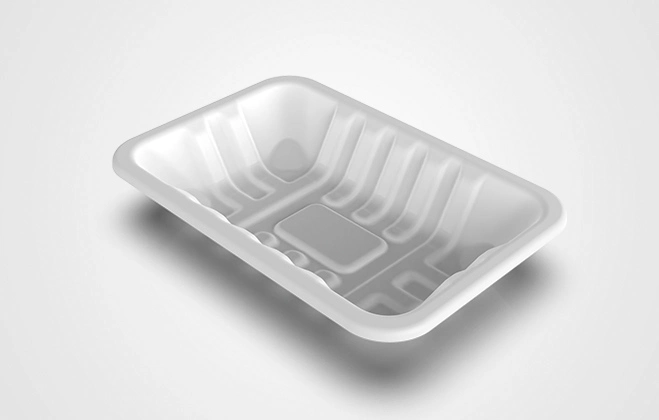Polylactic acid (PLA) is a biodegradable polyester polymer mainly synthesized from lactic acid, which is a new type of biodegradable material. PLA has good thermal stability with a processing temperature range of 170-230℃, good solvent resistance, and can be processed in various ways such as extrusion, spinning, biaxial stretching, injection blow molding. Products made from PLA not only biodegradable, but also have excellent biocompatibility, gloss, transparency, touch, and heat resistance.
Learn PLA packaging
Polylactic acid biodegradable packaging is a biobased polyester that is a compostable alternative to traditional plastics used for packaging.The lifespan of PLA is shorter than that of plastics, with a decomposition period of 6 months to 2 years. Development in production process and quantity makes it possible for different industries to incorporate PLA packaging into their packaging at a cheaper price. PLA packaging has widely applicable advantages in its production process.
Eco friendly PLA packaging
PLA food packaging is made from renewable raw materials, meaning that its carbon footprint is lower than that of fossil-based plastics. In addition, the production of PLA consumes less energy and generates fewer greenhouse gases than fossil-based plastics.
PLA packaging has other advantages in that it has a lower melting point and is easier to shape, requiring less energy. However, a low melting point is disadvantageous as it can become soft or distorted if used improperly. Another drawback of PLA packaging compared to traditional plastic materials is its higher permeability. Oxygen and moisture are more likely to penetrate it. PLA packaging's main advantage is its compostability. When properly incinerated, there are fewer toxic fumes than with other traditional methods, meaning that it does not release toxic acids when it degrades.
Another advantage of PLA packaging is that there is no risk of food contamination with food packaging, unlike plastic recycling. On the other hand, the compostability of PLA packaging is not fast enough for industrial composting and it does not break down into natural elements, so it needs to be sent to commercial composting facilities for treatment. The recyclability of PLA packaging requires a lower melting point than other plastics, which means it cannot be mixed with other plastic materials that require a higher melting point or it will contaminate the other plastics.
GoodBioPak is top of PLA packaging manufacturers in China and can provide one-stop biodegradable food packaging solutions. Contact with us and learn more.
 English
English 日本語
日本語 한국어
한국어 français
français Deutsch
Deutsch Español
Español русский
русский português
português العربية
العربية ไทย
ไทย Malay
Malay




















